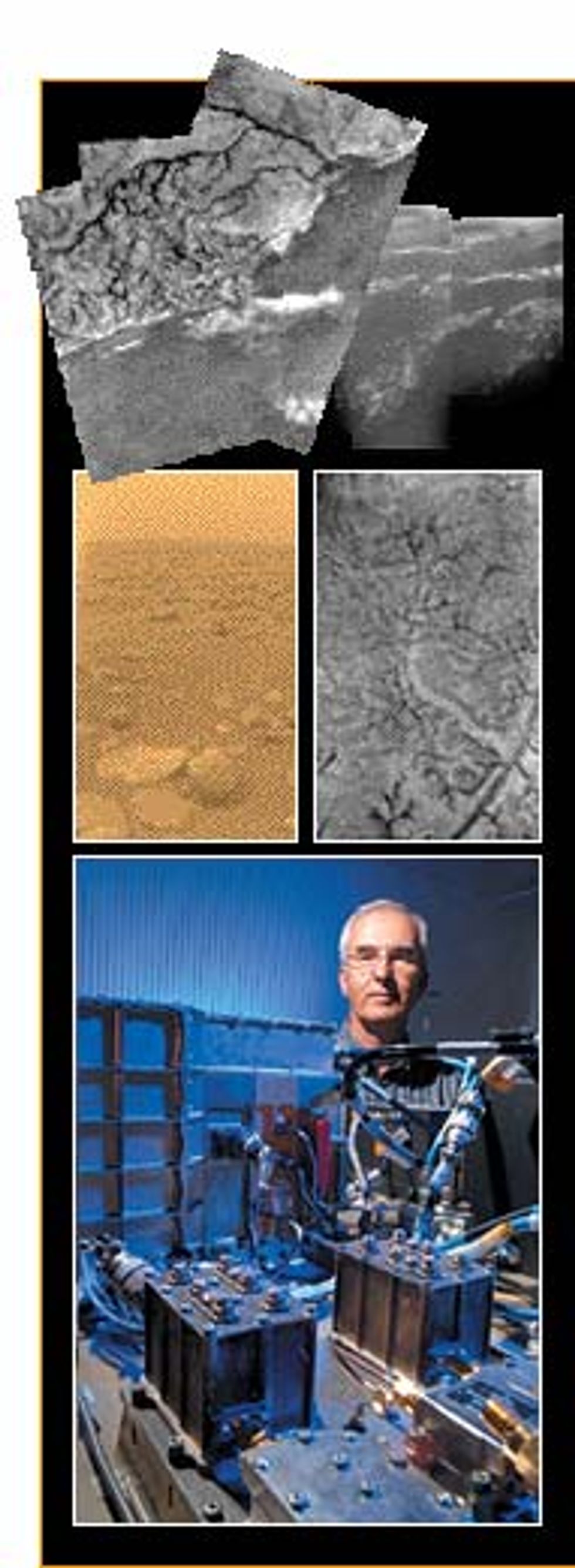A first peek under the veil of Saturn's moon Titan came on 14 January, when the European Space Agency's robotic craft Huygens sent images, sounds, and other data before and even after making a mercifully soft landing.
IMAGES CLOCKWISE FROM TOP RIGHT: ESA(4); BERT BOSTELMANN
Shown are rivers of methane, a panorama, a closeup of the surface, and a tableau of rocks. Shown standing behind an engineering model of Huygens is Boris Smeds, a Swedish engineer, who spotted a flaw in the communications system in time to allow for a work-around that prevented all the spacecraft's data from going to waste [see "Huygens Hero," IEEE Spectrum, October 2004].
